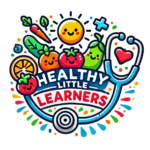Teaching your child about healthy eating habits lays the foundation for a lifetime of good nutrition and well-being. Developing these habits early helps children make balanced food choices, enjoy meals mindfully, and maintain a healthy relationship with food. In this article, we’ll explore practical tips and strategies for introducing healthy eating habits to your child in a fun and engaging way.
1. Lead by Example to Encourage Healthy Eating Habits
Children often model their eating behaviors after their parents, so setting a good example is crucial.
- Eat Balanced Meals: Show your child how to enjoy a variety of foods by including fruits, vegetables, whole grains, and proteins in your meals.
- Practice Mindful Eating: Avoid distractions like screens during meals and focus on savoring the food.
- Avoid Negative Talk About Food: Speak positively about all foods, emphasizing balance rather than labeling foods as “good” or “bad.”
2. Make Mealtime Fun to Build Healthy Eating Habits
Transform mealtime into a positive experience that encourages healthy eating habits.
- Get Creative with Presentation: Arrange fruits and vegetables in fun shapes or colorful patterns.
- Cook Together: Involve your child in meal preparation to make them feel invested in the process.
- Introduce New Foods Gradually: Offer small portions of unfamiliar foods alongside favorites to encourage exploration.
3. Teach Portion Control for Healthy Eating Habits
Helping your child understand portion sizes can prevent overeating and promote healthy eating habits.
- Use Kid-Sized Plates: Smaller plates help children visualize appropriate portions for their age.
- Listen to Hunger Cues: Teach your child to recognize when they’re hungry or full and avoid pressuring them to eat everything on their plate.
- Encourage Slow Eating: Eating slowly allows children to enjoy their food and recognize when they’re satisfied.
4. Educate About Food Groups
Introduce your child to the different food groups and their importance in a balanced diet.
- Explain Nutrients: Talk about how proteins build muscles, fruits provide vitamins, and grains give energy.
- Play Games: Use flashcards or interactive apps to teach about food groups in a fun way.
- Explore the Grocery Store: Take your child shopping and let them pick out a healthy option from each food group.
5. Create a Healthy Food Environment
Setting up your home to support healthy choices makes it easier for children to develop good habits.
- Stock Healthy Snacks: Keep fresh fruits, veggies, yogurt, and whole-grain snacks within easy reach.
- Limit Sugary Treats: Reserve sweets for occasional treats rather than everyday snacks.
- Offer Water First: Encourage your child to drink water instead of sugary beverages.
6. Foster a Positive Relationship with Food
Help your child view food as nourishment and enjoyment rather than a source of stress or guilt.
- Avoid Using Food as a Reward or Punishment: Encourage other ways to celebrate or manage behavior without involving food.
- Respect Preferences: While encouraging variety, respect your child’s likes and dislikes.
- Focus on Balance: Teach your child that all foods can fit into a healthy diet when eaten in moderation.
Conclusion:
Teaching your child about healthy eating habits is an ongoing journey that requires patience and creativity. By leading by example, making mealtime enjoyable, and fostering a positive relationship with food, you can help your child develop lifelong habits that support their overall health and well-being. Start small, be consistent, and watch your child grow into a mindful and confident eater.



